I'm observing a strange behaviour in some of my PCBs: they start working only when I spray isopropyl alcohol on them (or, to be more specific, the boost converter starts doing his job only after I spray it with alcohol, while connected to a power supply).
Let me explain this further: given this schematic, if I apply 3.8 volts (with a bench power supply at the moment, but I tried with a lithium polymer battery, too) to the "BATT" connectors, I expect get 3.3 V out of the TPS61201, but I get 0 V.

At this point, if I spray some isopropyl alcohol (IPA) over the general area where the TPS61201 sits, I get 3.3 V out of it, and it will keep on supplying 3.3 V until I shut the bench supply off (let it run for more than 5 hours).
I'm observing this behavior in the last two PCBs I've soldered, but the three I soldered before these worked flawlessly, so I'm inclined to think that the flaw lies with my handywork (I am currently using a hot air station to solder the components in question), but I can't explain the strange behavior with the alcohol. Any idea why this might happen? Here is a photo of the soldered TPS61201:

If it may help, here is a screen of the board's layout.
 .
.
I've done some probing around the converter, as suggested, and here are my findings:
When the converter "doesn't work":
- Vin: 3.9 V
- EN: 3.9 V
- PS: 3.9 V
- FB: 0 V
- Vout: 0 V
- UVLO: ~272 mV
After a quick spray:
- Vin: 3.9 V
- EN: 3.9 V
- PS: 3.9 V
- FB: 3.35 V
- Vout: 3.35 V
- UVLO: ~272 mV
I've ordered a can of freeze spray for further testing and I'm thinking of a way to measure my board temperature around the converter, to rule out a thermal protection problem.
I'm trying to "digest" all the suggestions, but it may take me some time, for my background is lacking in the field, so bear with me.
Ok, maybe I find the issue, thanks to @TonyStewartEE75 and @BruceAbbott answer and comment.
I didn't understand the UVLO hysteresis at all: according to the datasheet the rising UVLO voltage (that is, if I get this correctly, the minimum voltage needed to turn the converter on) is 350 mV. Back to the UVLO threshold formula I went (datasheet par 11.2.2.2) and this is what I got:
$$ 2700000 = 249000 *(x/0.35 - 1) \\ x = 4.14 $$
So I cranked up my Vin from 3.9 V to 4.2 V and the converter works as intended. It seems that I have to switch my R9 resistor with another with more "sane" values, for I doubt my single cell lithium polymer battery would ever reach the full 4.2 V, preventing my board from ever switching on.
